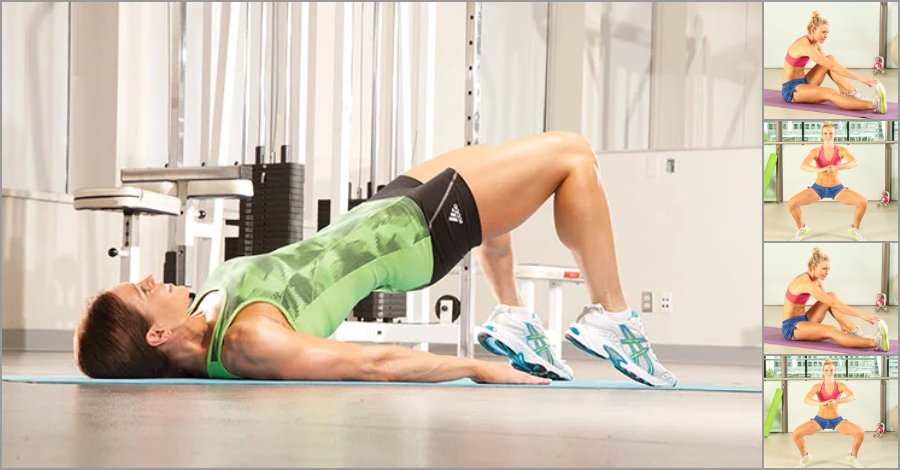When it comes to stubborn body parts, calves often top the list. The calf muscle can be difficult to grow due to a lot of genetics. Some people are born with well-built calves, but others have to scratch and claw for any noticeable difference. Fortunately, your calves are about to receive the wake-up call they’ve been waiting for with German volume training.
GVT, also called the “10 sets method,” was first established in the mid-1970s by German weightlifting coach Rolf Feser. Here’s the gist: By using a heavyweight and doing 10 consecutive sets with very little rest in between, a group of motor units gets repeatedly taxed.
As a result, the targeted muscle develops an improved work capacity, making it more resistant to fatigue while growing larger in size. Feser developed the approach for off-season athletes hoping to build muscle while also burning fat. You’ll have thicker, stronger and more defined calves due to the level of force production and muscle damage that has taken place during the cycle.
Once the muscles repair and rebuild, the result will be big-time growth. So achtung calves — you’re about to get schooled!
The Plan:

The first move in each of these workouts is your GVT set. Choose a heavyweight and perform 10 sets of 10 reps each, resting 30 to 60 seconds between sets. Use a tempo of three seconds to lift and two seconds to lower, and by rep 10 of each set, you should be close to failure.
To round out your workout, do two supplementary exercises to hit the calf muscle from slightly different angles, ensuring optimal training stress on the muscle while achieving full fatigue. You can do each of these workouts once a week, leaving at least one to two full days of rest in between to fully recover.
Stick with the program for three to four weeks, then return to your normal program for five to six weeks; repeat as necessary. Because this technique is so intense, you should only use it over the short term as a way to shock your muscles, according to Somerset.
Workout 1:
Standing Barbell Calf Raise:
To make this exercise more challenging, stand directly on top of a platform or box and position the heels just off the edge.

How to:
- Stand with your feet hip-width apart and hold a barbell across your traps.
- Keeping your core tight and your knees straight but soft.
- Rise up onto your toes and pause briefly before lowering back down to complete the rep.
One-Legged Dumbbell Calf Raise:
Bend your working knee slightly to prevent joint strain, and contract your abs to keep yourself stable.

How to:
- Stand on top of a low box or platform with your heels hanging off the edge.
- Hold a dumbbell in one hand and place your other hand lightly on a stable object or wall.
- Shift your weight to the dumbbell-side leg and lift the other foot off the box, bending your knee to bring it behind you.
- Then sink as low as you can into your working heel.
- Press up through your toes and rise up as high as you can, contracting your calf hard at the top, then slowly lower to the start.
- Do all reps on one side before switching.
Resistance Band Calf Extension:
Don’t let your leg roll inward or outward; keep your toes pointed toward the ceiling for the best activation.

How to:
- Sit on the floor with your legs straight and back upright, and loop a resistance band across the upper portion of one foot.
- Bend your other knee and open it to the side so the sole of your shoe rests against the inside of your other knee.
- Hold the ends of the resistance band with both hands to create tension, elbows tucked into your sides.
- Flex your quad, then point your toes as far as you can.
- Pause and then slowly return to the start.
- Complete all reps on one side before switching.
Workout 2:
Seated Dumbbell Calf Raise:
The closer the weights are to your hips, the easier the move; the closer they are to your knees, the harder it becomes.

How to:
- Sit on the edge of a flat bench and hold a set of dumbbells vertically on top of your thighs by your knees.
- Pull your feet underneath you a bit so you’re on the balls of your feet.
- Keeping your back straight, rise up onto your toes and press your knees up as high as possible.
- Pause in this top position and squeeze before lowering to the start.
Standing Resistance Band Calf Raise:
Use a thicker band to make the move more challenging. You also can try this move with your toes turned out to hit the calves in a different way.

How to:
- Stand in the center of a resistance band with your toes forward and hold the ends of the band just above your shoulders (as if doing a shoulder press).
- Keep your back straight and your focus forward.
- Rise up onto your toes as high as possible while holding the band steady at your shoulders.
- Pause at the top and then lower down to complete the rep.
Walking “A” Skip:
Use the momentum of your driving knee to help you rise up and even leave the ground a few inches, and make the movement fluid, dynamic and continuous.

How to:
- Stand with a barbell across your upper back and traps, with your focus forward and your abs tight.
- Quickly drive one knee forward and upward to hip height as you rise up onto the toes of the supporting leg.
- Lower down, replace your leg and continue, alternating sides.

